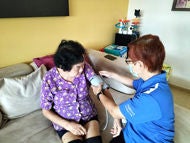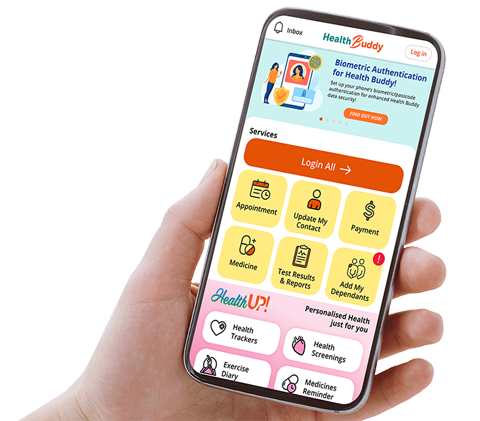
Pulmonary nodules are often discovered incidentally. With the five-year survival rate for surgically resected early-stage lung cancer at about 75%, early identification of malignancy through careful clinical assessment of nodule size and malignancy risk is crucial to achieving better patient outcomes.
INTRODUCTION
A pulmonary nodule is defined as a small (≤ 30 mm), well-defined radiographic opacity surrounded by pulmonary parenchyma, without associated atelectasis, effusion or enlarged lymph nodes. It is a common radiologic finding, and a prevalence of 20-50% has been demonstrated in healthy adult volunteers and lung cancer screening populations.1 Pulmonary nodules are often discovered incidentally, and the incidence is expected to rise with the increased utilisation of computed tomography (CT) scans.
ETIOLOGY
The differential diagnosis for pulmonary nodules is broad, and includes malignancy, inflammatory, infectious, congenital, and vascular pathologies. Most (> 95%) incidental pulmonary nodules are benign, even in lung cancer screening populations, but some may be a sign of early lung cancer.2
While the overall survival rate of lung cancer remains poor (10-15% five-year survival rate), in contrast, the five-year survival rate of surgically resected early-stage lung cancer approaches 75%.
It is therefore important for managing physicians to assess the likelihood of malignancy to guide evaluation and management.
RISK ASSESSMENT FOR MALIGNANCY
The size and morphology of the nodule are the two main determinants of cancer risk.3
Size
Nodules less than 6 mm in diameter have a low risk of cancer (< 1%), while approximately 40-80% of nodules larger than 20 mm are malignant.3
Morphology
Morphology refers to the margins (smooth, lobulated, or spiculated) and attenuation of the nodule.
Attenuation can be classified into solid or subsolid nodules, with the latter divided into pure ground glass and part-solid (having both ground glass and solid components) nodules. Ground glass nodules are characterised by an area of increased pulmonary attenuation that does not obscure underlying bronchial and vascular markings.
Subsolid or spiculated/lobulated nodules, upper lobe location as well as older age and heavy smoking also increase the risk of cancer.1,4
Quantitative assessment models have been developed to estimate the probability of malignancy, but these have not been validated in Asian populations.5
MANAGEMENT STRATEGY
When a nodule is identified, it is important to check previous imaging studies to evaluate if the nodule is new, old, stable, or growing over time. Solid nodules that are stable over time (≥ 2 years) are unlikely to be malignant.
Management of pulmonary nodules are largely determined by:6
- Size of the nodule
- Clinical probability of malignancy
- Patient values and preferences
Not all incidental pulmonary nodules require routine follow-up or further evaluation. In a patient with a low risk profile and a solid nodule of < 6 mm, no follow-up may be necessary if this is consistent with the patient's preferences (after understanding the risks and benefits). For pulmonary nodules that require follow-up, surveillance with serial low-dose chest computed tomography scans (LDCT) is generally recommended for nodules ≤ 8 mm in diameter, or when the clinical probability of malignancy is deemed to be low (< 5%).6,7
For indeterminate nodules greater than 8 mm in size, management options can vary, including:
- Surgical diagnosis
- Non-surgical biopsy (transthoracic or endoscopic lung biopsy)
- Functional imaging with fluorodeoxyglucose positron emission tomography (FDG-PET)
- Surveillance with serial CT scans
The management strategy will be largely guided by malignancy risk and individualised according to patient values and preferences.6 For example, non-surgical biopsy, or surgical biopsy (and possibly simultaneous resection) in an individual with low surgical risk, is typically offered when the clinical probability of malignancy is deemed to be high (> 60%).
RADIOLOGICAL IMAGING
Chest CT with thin (≤ 1 mm) sections has a higher accuracy than chest radiographs in detecting nodules and can provide information on location, size, attenuation, and characteristics of the nodule. In an individual with an indeterminate nodule identified on chest radiography, a chest CT should be performed to help characterise the nodule.4
For surveillance imaging, contrast enhancement is typically not required, and a LDCT is sufficient.
IMPORTANT CONSIDERATIONS
There are important considerations with risk assessment and management in the local population. Firstly, pulmonary tuberculosis is a common disease presenting as pulmonary nodule(s) in the local and Asian population.
Like cancer, tuberculosis is more commonly found in the upper lobes and can result in a positive PET scan, which makes interpretation challenging.
Secondly, Asian women who are never-smokers are
at higher risk of developing lung cancer compared
with women living in Western countries. Adapting risk
assessment and management of patients with the
above considerations in mind is recommended in our
local population.6
REFERRAL TO A SPECIALIST CENTREAn optional LDCT at 12 months may be performed for individuals with solid nodules < 6 mm, which should be guided by clinical assessment of malignancy risk and patient preferences.7 However, individuals with solid nodule(s) ≥ 6 mm or subsolid nodule(s) of any size should be referred to a specialist centre for management. |
A WORD ON LUNG CANCER SCREENING
Organisations like the United States Preventive Services Task Force recommend annual lung cancer screening with LDCT for eligible individuals. This is largely driven by the results of large multicentre trials from North America and Europe reporting a reduction in lung cancer-related mortality with LDCT screening.8,9
Screening in Asian population
However, strong evidence supporting lung cancer
screening for the Asian population is still lacking, with
concerns of overdiagnosis and false positives leading
to unnecessary investigations (e.g., lung biopsy) with
risk of complications. The ideal screening population
is also unclear as a significantly higher proportion of
lung cancers are detected among never-smokers in the Asian population, compared to Western countries.
Clinical practice guidelines (2010) from the Ministry of Health Singapore recommend against routine screening for lung cancer.10
Who should be screened
For asymptomatic individuals between 55-74 years of
age and a smoking history ≥ 30 pack-years (current
smoker or ex-smoker who quit smoking within the
last 15 years), it may be reasonable to engage in
opportunistic discussion on lung cancer screening.11
Certainly, all patients who are current smokers should
be routinely counselled on smoking cessation.
SINGHEALTH DUKE-NUS LUNG CENTRE |
|---|
The SingHealth Duke-NUS Lung Centre is focused on delivering high quality clinical care for all thoracic conditions and provides a unique platform for multidisciplinary collaboration and consultation. Within the Centre is a dedicated Nodule Clinic, which offers access to multidisciplinary services (by Respiratory Medicine Physicians, Surgeons, Radiologists, Oncologists and Thoracic Nurse Practitioners) as recommended in guidelines.6 |
REFERENCES
-
Callister MEJ, Baldwin DR, Akram AR, et al. British Thoracic Society guidelines for the investigation and management of pulmonary nodules.
Thorax 2015;70 Suppl 2:ii1-ii54.
- McWilliams A, Tammemagi MC, Mayo JR, et al. Probability of cancer in pulmonary nodules detected on first screening CT. N Engl J Med
2013;369(10):910-919.
- Larici AR, Farchione A, Franchi P, et al. Lung nodules: size still matters. Eur Respir Rev 2017;26(146):170025.
- Gould MK, Donington J, Lynch WR, et al. Evaluation of individuals with pulmonary nodules: when is it lung cancer? Diagnosis and management of
lung cancer, 3rd ed: American College of Chest Physicians evidence-based clinical practice guidelines. Chest 2013;143:e93S-e120S.
- Al-Ameri A, Malhotra P, Thygesen H, et al. Risk of malignancy in pulmonary nodules: A validation study of four prediction models. Lung Cancer
2015;89(1):27-30.
- Bai C, Choi C, Chu CM, et al. Evaluation of pulmonary nodules: Clinical Practice Consensus Guidelines for Asia. Chest 2016;150(4):877–893.
- MacMahon H, Naidich DP, Goo JM, et al. Guidelines for management of incidental pulmonary nodules detected on CT images: From the Fleischner Society 2017. Radiology 2017;284(1):228–243.
- de Koning HJ, van der Aalst CM, de Jong PA, et al. Reduced lung-cancer mortality with volume CT screening in a randomized trial. N Engl J Med 2020;382(6):503–513.
- National Lung Screening Trial Research Team et al. Reduced lung-cancer mortality with low-dose computed tomographic screening. N. Engl. J. Med. 365, 395–409 (2011).
- Lee HP, Chew CT, Consigliere DT, et al. Ministry of health clinical practice guidelines: cancer screening. Singapore Med J 2010;51(2):170-173.
- Liew CJY, Leong LCH, Teo LLS, et al. A practical and adaptive approach to lung cancer screening: a review of international evidence and position on CT lung cancer screening in the Singaporean population by the College of Radiologists Singapore. Singapore Medical J 2019;60(11):554-559.
Dr Goh Junyang Ken is a Consultant at the Department of Respiratory & Critical Care Medicine, Singapore General Hospital. He graduated from Duke-NUS Medical School in 2012 and obtained his specialist accreditation in Respiratory Medicine in 2018.
Dr Chai Hui Zhong obtained her medical degree from the National University of Singapore
in 2012. She obtained specialist accreditation in Respiratory Medicine and Intensive Care
Medicine in 2018 and 2020 respectively. Her sub-specialty interests are Chronic Mechanical
Ventilation and Intensive Care Medicine. Currently, she is the Director of the Pulmonary
Function Laboratory. Besides her clinical work, she is also actively involved in medical
education and the use of simulation as a teaching tool.
GPs can call the SingHealth Duke-NUS Lung Centre for appointments at the
following hotlines, or scan the QR code for more information:
Singapore General Hospital: 6326 6060
Changi General Hospital: 6788 3003
Sengkang General Hospital: 6930 6000
KK Women’s and Children’s Hospital: 6692 2984
National Cancer Centre Singapore: 6436 8288



















